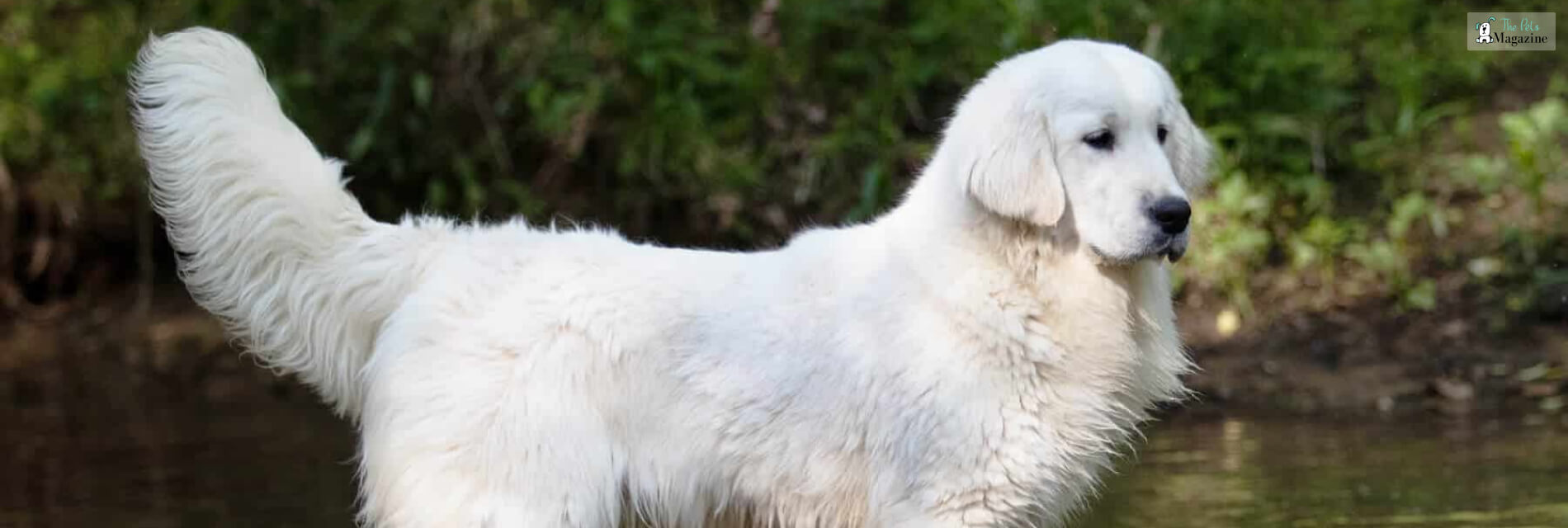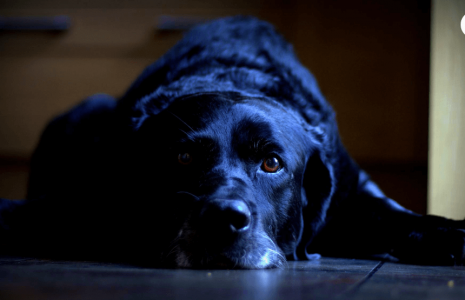Everything You Need To Know About White Golden Retrievers


Have you ever wondered what’s behind those gorgeous white golden retrievers you’ve seen on Instagram? You’re not alone. White goldens have become hugely popular in recent years thanks to their stunning snowy coats and sweet temperaments.
But what exactly are white golden retrievers, and where do they come from?
In this article, you’ll learn everything you need to know about these beautiful dogs, from their origins and genetics to their temperament and care requirements.
By the end, you’ll be a white golden expert armed with all the info you need to determine if one of these pups is the right companion for you. So sit back, grab some treats for your furry friend, and let’s dive into the wonderful world of white golden retrievers.
What Is A White Golden Retriever?

The white golden retriever has a fascinating history. Originally bred in Scotland and England, golden retrievers were traditionally bred as gun dogs to retrieve waterfowl during hunts.
In the early 1900s, breeders started producing cream-colored puppies from golden retriever litters. These puppies were seen as inferior by hunters but gained popularity as companion dogs.
In the 1970s, breeders began selectively breeding the lightest-colored golden retrievers to produce white offspring.
Diligent breeding of the palest goldens over generations led to the first truly white golden retrievers. These stunning white goldens grew in popularity and were officially recognized as a color variation of the golden retriever breed in the 1990s.
White golden retrievers remain rare to this day, accounting for only about 5-10% of golden retrievers. Their unique and beautiful snowy white coats mean they are highly sought after as companion dogs. However, their rarity also often translates to higher prices from reputable breeders.
If you have your heart set on one of these angelic beauties, be prepared to go on a waiting list, do plenty of research on ethical breeders, and budget accordingly.
But for many owners, their precious ivory-coated companion is well worth it. The white golden retriever is a stunning dog with a heart of gold to match its coat.
White Golden Retrievers: Breed Overview
Here is a brief overview of white golden retrievers:

Appearance:
White goldens have a distinctive creamy white coat, pale nose, and light-colored eyes. They tend to be on the larger side, 65-75 pounds for males and 55-65 pounds for females. Their fluffy coat requires frequent brushing and bathing to prevent mats and tangles.
Some white goldens have a pinkish tint to their nose and paw pads, but this often fades to pale tan or buff as they age. The lack of pigment can make them more prone to skin conditions, so check their skin regularly and limit sun exposure during the hottest parts of the day.
Temperament:
White goldens share the same sweet, gentle temperament as their golden counterparts. They tend to be playful, patient, and eager to please, making them wonderful family dogs and companions for people of all ages. However, some may be more timid or anxious due to their pale color, so early positive socialization and training are important.
With the right care and affection, a white golden can make a loving lifelong friend. Their striking appearance and kind disposition are sure to brighten any home. If you’re looking for a beautiful, good-natured dog, the white golden retriever is a perfect choice.
Caring for Your White Golden Retriever:
Caring for a white golden retriever requires diligence and patience. These beautiful dogs need extra attention to keep their coats pristine and prevent skin problems.
Brush your white golden retriever at least a few times a week to prevent mats and tangles in their long fur. Use a slicker brush and undercoat rake to remove loose hair and distribute natural oils. Bathing once a month is typically enough, using a whitening dog shampoo and conditioner to brighten their coat and moisturize their skin.
Limit sun exposure, especially during the hottest parts of the day. Too much sun can cause sunburn irritation and increase the risk of skin cancer in white dogs. Walk or exercise your dog during the early morning and evening hours. Apply dog-safe sunscreen to their ears, nose, and any exposed skin before going outside during peak UV hours.
Check Your Dog Frequently:
Check your white golden retriever regularly for skin problems like dermatitis, folliculitis, or skin infections. Their light skin and fur make these issues hard to detect, so inspect often for any redness, rashes, bald spots, or skin lesions. See a vet right away if you notice any abnormalities.
Wipe down your white golden retriever’s coat, ears, and paws after playing or walking outside to remove stains, dirt, and debris. Grass stains, mud, and other messes can be hard to get out of once set in. Rinse or spot-clean any soiled areas as soon as possible.
Feed a high-quality diet with fish oil or flaxseed supplements to promote a healthy coat and skin. Limit treats and human table scraps, which can lead to obesity and other issues.
Keeping a meticulous grooming routine, limiting sun exposure, and providing proper nutrition are the keys to caring for your white golden retriever’s stunning yet sensitive coat. With diligent care and attention, your white golden can live a long, happy, and healthy life.
Final Thoughts!
White golden retrievers may look like polar bears, but they have the heart of gold that goldens are known for. Now that you’re armed with all the info, are you ready to bring one of these gorgeous pups into your life?
If you treat them with patience, love, and lots of belly rubs, a white golden retriever will shower you with affection and brighten even your darkest of days. What are you waiting for? Your new best furry friend is out there waiting for you! Go find your white golden and start making memories together. You’ll be so glad you did.
Recommended Reading…









Leave A Comment